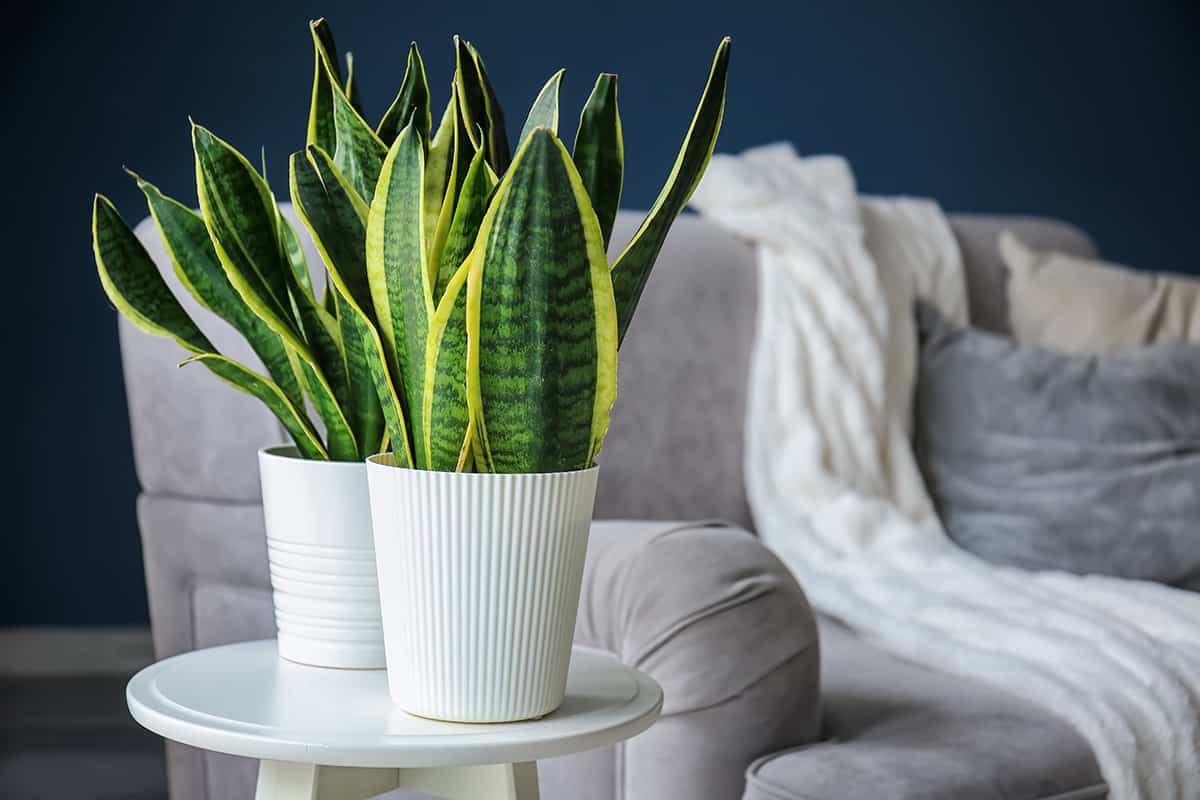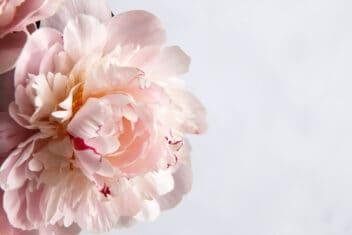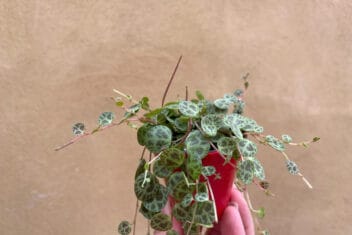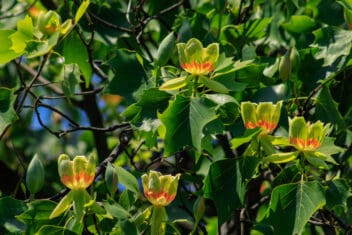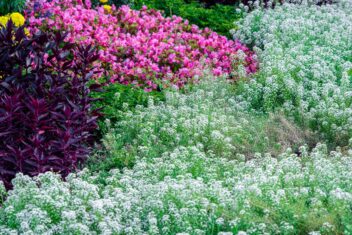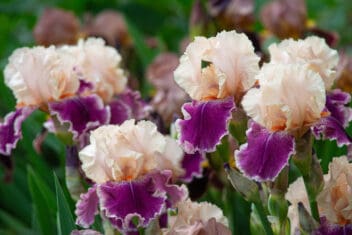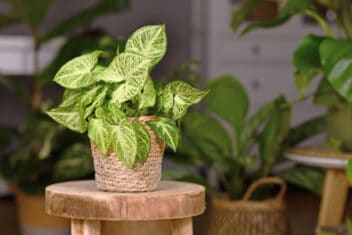Snake plants are one of the most popular houseplants out there. They’re instantly recognizable with their long, pointed leaves that are sure to catch anyone’s eye.
There are over a dozen different species available, so options abound! Plus, it’s an easy houseplant to look after and doesn’t require much work to maintain. It only needs a little water, and it can survive being left alone for a long period of time.
The snake plant is perfect for beginners and makes a striking addition to your home. Let’s find out a little more!
Best Snake Plant Species and Cultivars
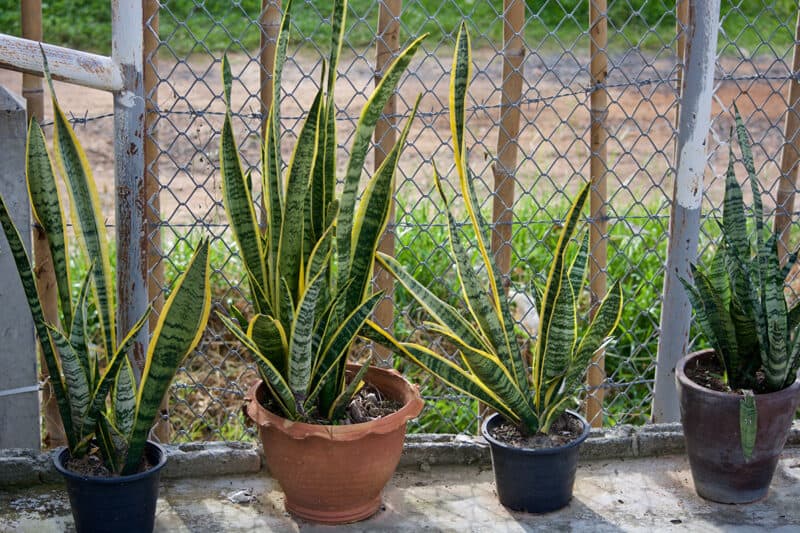
Snake plant is a generic term for several different species of plants in the Dracaena genus (formerly the Sansevieria genus). It’s also called Mother-in-Law’s Tongue and Viper’s Bowstring Hemp. The latter name comes from the fact that the fibers of the plant are so tough that you can use them to make bowstrings.
Here are some of the stand-outs as houseplants.
‘Black Gold’
The leaves on the ‘Black Gold’ cultivar of D. trifasciata can grow up to 2.5 inches wide. They develop a vibrant yellow outline around the dark green leaves and they can also grow up to 4 feet tall.
‘Golden Hahnii’
This is the smallest variety of snake plants that you can find, as they only grow up to about 10 inches tall. Another D. trifasciata cultivar, it forms yellow and green flowers in summer or early fall.
‘Futura Robusta’
The name ‘Futura Robusta’ refers to the sturdy nature of this D. trifasciata snake plant. It can grow taller than ‘Golden Hahnii’ as it can reach 24 inches in height. Unlike the yellow lines on other varieties, this plant has stripes of gray. The leaves also twist around each other giving a unique appearance to this plant.
Blue Sansevieria
The leaves on the Blue Sansevieria (D. ehrenbergii) grow in parallel lines and small gray and white flowers bloom during summer and fall.
It’s small in size and grows up to 5 feet tall and 2.5 inches wide, so it is ideal as a houseplant for a small spot.
‘Futura Superba’
In contrast to the bright green leaves on other snake plants, this cultivar of D. trifasciata has a dark green color. It can be exposed to bright light which makes it suitable for windowsills.
Dwarf Sansevieria
If you are looking for a wonderful hanging plant, this option is for you. It grows into an almost perfect symmetrical rosette which makes it great for attaching to a wall. Known as dwarf sansevieria (D. ballyi), this species stays extremely petite.
Normally, flowers grow in clusters on a dwarf sansevieria.
Star Sansevieria
Star sansevieria (D. kirkii) is one of the biggest species of snake plants. The leaves can grow up to almost 6 feet! This plant needs lots of sunlight to keep a vibrant and colorful appearance. Having lots of access to sunlight will also help it to grow quicker.
Ceylon Bowstring Hemp
Ceylon Bowstring Hemp (D. zeylanica) plants develop wonderful white spots on their leaves with dark green outlines. Although, it is important not to put this plant too close to sunlight as it will turn the leaves yellow.
Sansevieria Patens
In contrast to other snake plants, which grow upright, the leaves on D. patens plant grow in all different directions. They also grow gray and white flowers in their blooming season.
Starfish or Boncel Sansevieria
It is easy to spot a Starfish sansevieria (a hybrid of D. cylindrica) as the leaves form a fan-like shape when grown. The flowers on this plant have a sweet fragrance which leaves a lovely odor in your house. This one isn’t as common as most of the others, so keep an eye out and nab it if you see it.
African Spear
D. cylindrica has narrow, cylindrical, gray-green leaves with subtle stripes, which gives it a unique look compared to other snake plants. It needs sandy soil to grow and can’t handle wet roots.
Sansevieria Eilensis
The succulent D. eilensis can appear like a flower when you first see it because it’s small with heavily striped leaves. Unlike other snake plants, the flowers grow into spike-like racemes.
How to Grow a Snake Plant
Snake plants thrive in bright spaces and environments with direct sunlight. As mentioned before, they don’t need a lot of watering, so you only need to give this plant more moisture when the soil has dried out.
Soil
When it comes to soil, the best option is a loose and spacious pot with lots of drain holes. Ideally, sandy soil is best for the growth of a snake plant. When you are looking for soil in the shops or online, you can pick an all-purpose cactus potting soil as they have similar planting conditions.
Temperature and Humidity
For optimal growth, snake plants need warm conditions and you should ensure that the plant is well protected from any drafts. You must avoid frost during winter as it will destroy this plant. They prefer a moderate amount of humidity.
Propagation
Snake plants are easy to propagate through cuttings. Simply cut a leaf as close to the base as possible. Cut an inverted v-shaped notch out of the base and place the cutting in a glass of water or potting soil. You don’t have to make the notch, but it helps increase the area for roots to grow and prevents the leaf from sealing to the base of the container it is growing in.
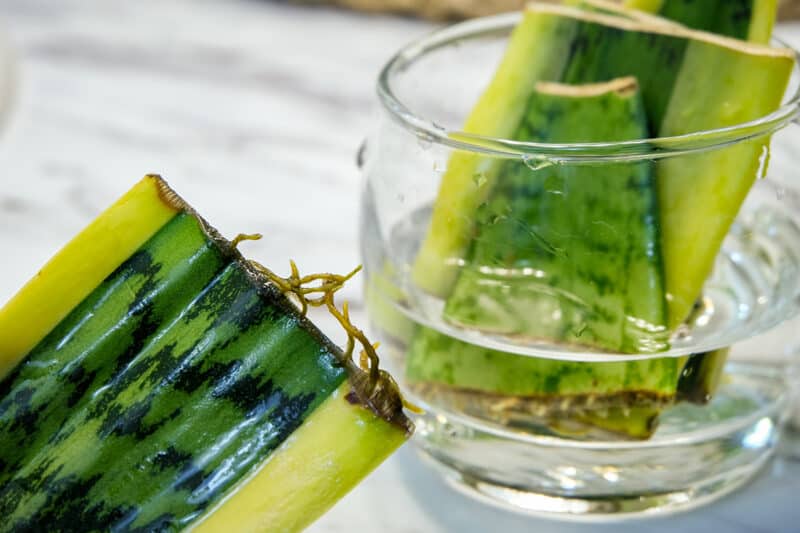
After a few weeks, new growths called pups will form at the base. You will also see roots forming if you are growing the leaf in water.
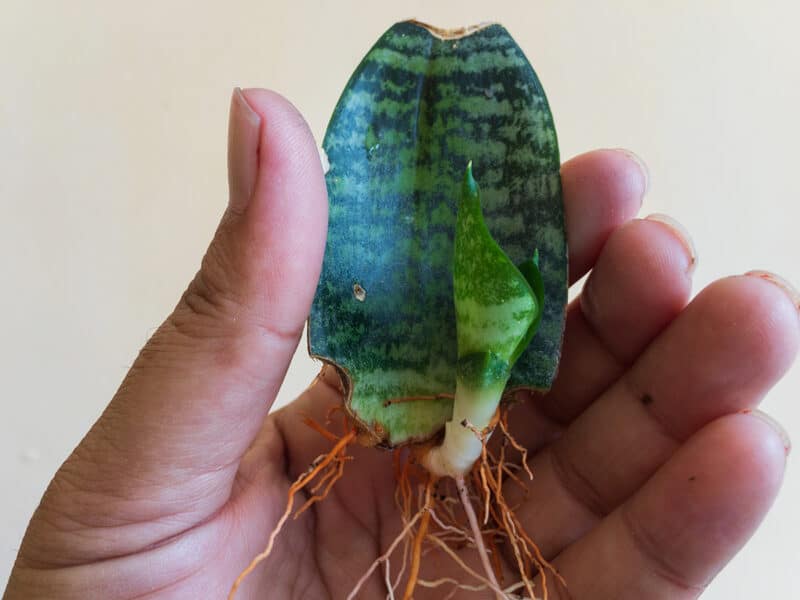
Now, you can transplant your new starts into their permanent home.
Keep in mind that some hybrids or variegated types will revert to solid green when grown this way.
If you are interested in growing a snake plant from seeds, you need a few tips first.
- Snake plant seeds have low germination rates
- It can take 3-6 weeks before you see any results
- Keep the soil lightly moist when starting
Finally, you can also divide your snake plant. Remove it from its container and brush away the soil. Pull the leaves and tease the roots apart that you want to separate. You might need to use a knife. Plant the new plant in its own container and replant the parent back in its original container.
Caring for Your Snake Plant
As with all plants, there’s a little maintenance required to make snake plants happy. To care for your snake plant you need to do a few things:
- Wipe leaves frequently to prevent dust from building up
- Don’t damage the leaf tips the damaged leaf will stop growing
- Dry air doesn’t harm them so you don’t need to mist your plant
Fertilizer
Snake plants don’t need fertilizer in the winter but they can use a little cactus fertilizer during their growing season. Feed in the spring and summer or just once in the spring with a slow-release fertilizer.
Potting and Repotting Snake Plants
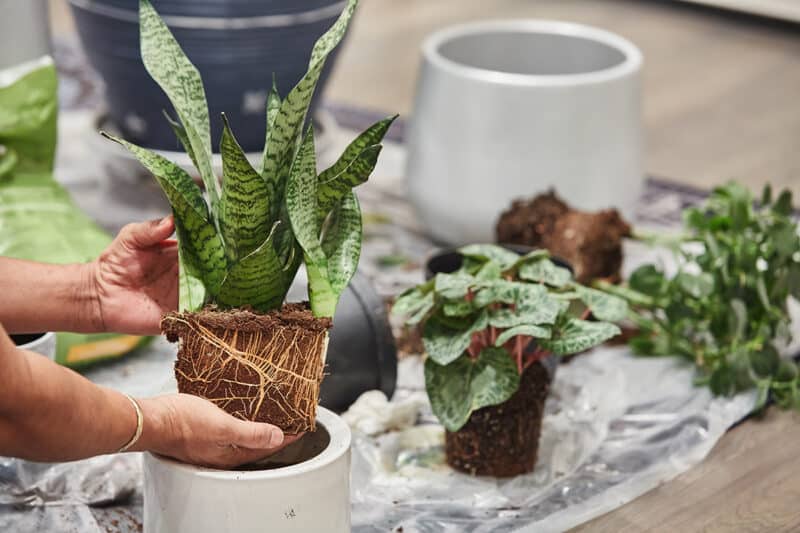
When you are looking for a pot to plant your snake plant, the most crucial thing to look out for is how durable it is. You will need a strong and robust pot as the strong roots will crack a weak pot.
Most of the time snake plants don’t need to be repotted, but occasionally if they grow rapidly they will require a new pot. The best time to do this is during spring.
To re-pot, pick the next size up of container and add a bit more soil to the base. Remove the plant from its old container and gently place it in the new one. Fill in around with soil.
How to Make Your Snake Plant Bloom
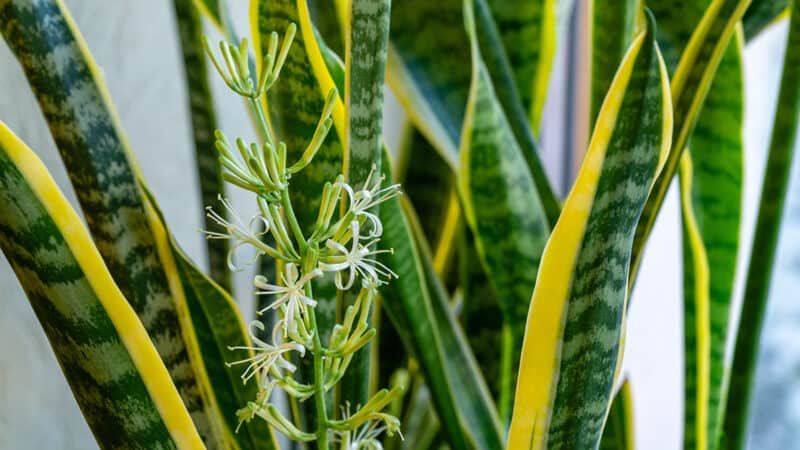
If the conditions are perfectly balanced with water, sun, and humidity, your snake plant will flower. However, you will need to expose your plant to the outdoors in order for it to bloom. If it is only kept inside, you will not see any flowers.
The flower heads will drop on their own once they decay, so you don’t need to worry about deadheading them.
Common Problems With Snake Plants
Even though snake plants are easy to maintain and simple to plant, you will need to watch out for a few things when growing this plant.
Yellow or Brown Leaves
This is the most obvious problem that you can encounter when looking after a snake plant. When the leaves turn yellow or brown then you might be overwatering it. Other causes might be pests or root rot.
The good news is, you can manage the risk of yellow or brown leaves by being careful about your watering schedule. Don’t overwater. You should always err on the side of underwatering.
Drooping Leaves
On a healthy snake plant, the leaves will shoot upright towards the sky, but when leaves start to droop it could be a sign of draining problems. To solve this problem you will need to move the plant to a brighter location to dry out the soil. Make sure the container has drainage holes and that they aren’t blocked. Reduce the amount you are watering.
Curling Leaves
When your plant becomes infested with pests like aphids, the leaves will start to curl. If you suspect that your snake plant might be infected, you can use a magnifying glass to study the leaves for tiny bugs. All you need to do is cut the leaves away and spray with neem oil or vegetable soap to cure the plant.
After that, new leaves will grow and your plant will continue to thrive!
Hopefully, you will have a better idea of how to grow and care for your snake plant after reading this article.
Once you have chosen the variety of snake plants you would like, all you need to do is keep an eye on any signs of pests or overwatering. Apart from that, this plant will be easy to keep in your house!
